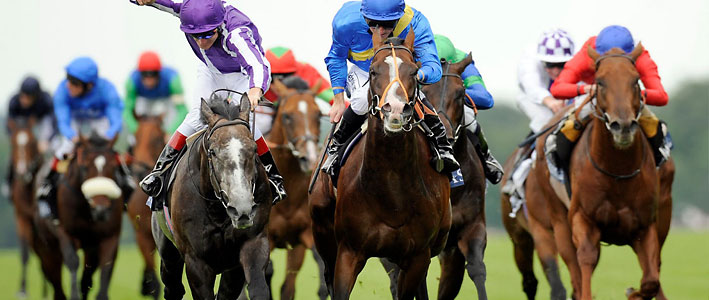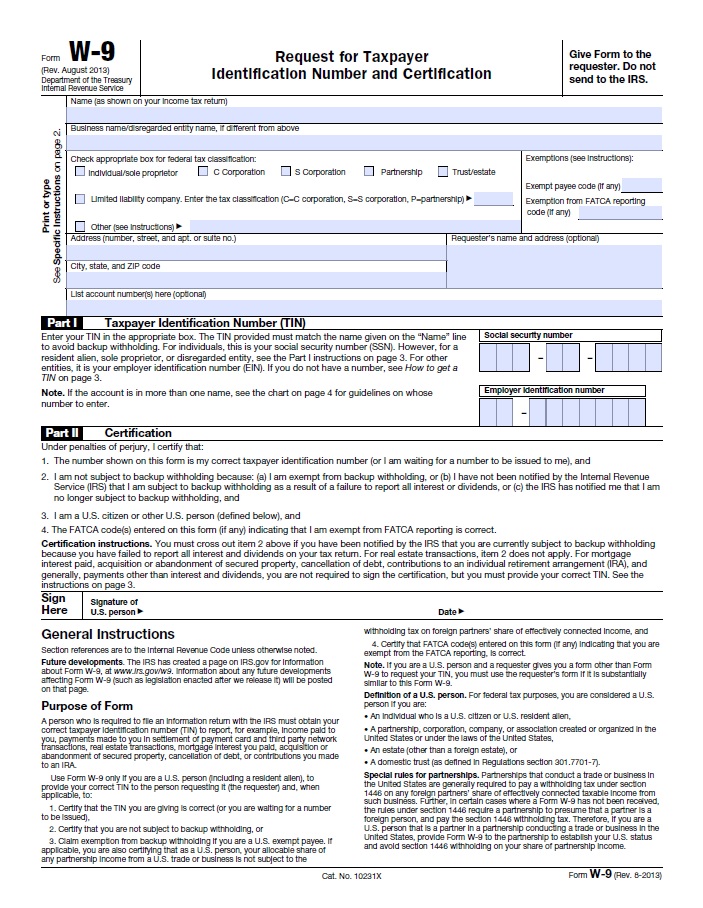How Do Odds Work in Horse Racing?
Horse racing odds are fluid leading up to the race because they are dictated by the amount of money in the pools. Prior to every race day, a track official will release the morning lines. Those morning lines are a projection of where the odds for each horse will finish when the race goes off, and do not have any direct impact on potential payouts. Using those morning lines as a starting point, as more money comes in on certain horses, their odds will go down. Horses that aren't attracting a lot of money in the win pool will have their odds go up. Those odds will remain fluid all the way up until the moment the gates open and the race begins.

Horse Track Betting 101

Horse Betting 101

Horse Racing Bets Explained
And if the horse comes in third, then a show wager is paid out. If the horse does not come in the top-three, then none of the bets will be paid. Horse Racing Win Odds. How to read the odds. Bet $2.00 on a horse at 1/10 to win $2.20. Bet $2.00 on a horse at 8/5 to win $5.20. Bet $2.00 on a horse at 20/1 to win $42.00. Odds Chart Odds. Horse Betting 101 At its simplest, horse betting is looking at a lineup of up to 14 horses, and predicting which one (s) you think will place. Go to our betting strategy page for a more complete description of each type of bet. Win – You win if your horse finishes 1st. Place – You win if your horse finishes 1st or 2nd. Show – You win if your horse finishes 1st, 2nd, or 3rd. EXOTIC WAGERING Some people like to be a little more daring in their betting.
Horse Betting 101
The most important thing to note is that the odds/payout you will receive are based on when the race starts, not when you place the bet. If you bet on a horse at 5-to-1 three minutes before the race and he goes off at 3-to-1, you're going to get paid based on those 3-to-1 odds. Conversely, if you bet on a horse at 5-to-1 and he goes off at 8-to-1, you're looking at a nice increased payout.
How To Bet On Horses
Horse Betting 101At its simplest, horse betting is looking at a lineup of up to 14 horses, and predicting which one(s) you think will place. We looked exclusively at the thoroughbred sphere of horse racing, as this is considered the most sophisticated form of the sport, meaning there is the most betting occuring and the most information about races. At the time of placing the bet, you have certain resources available to you: - Toteboard: A large signposting of useful information, such as the win odds or payoffs for each horse, the total win pool, and the amount bet on any given horse. The toteboard rounds down odds to the nearest dime, so the exact payoff may be slightly more or less depending on the exact value of the odds.
- Racetrack Program: This has details on all the horses, trainers, owners, and jockeys in the races. You must pay $3 for a copy.
- The Daily Racing Form: This provides the historical racing data for each horse racing, as well as some articles and handicapping information by the staff responsible for this form. You must pay $4 for a copy.
- Handicapping Tip Sheets: The handicappers at each race track publish these daily to offer some selections of information and tips regarding the handicapping. You must pay $2 per copy.
- Public Handicapper Selections: Depending on the town and situation, some town newspapers pay a handicapper to make selections which are then published. Cost paid depends on the local newspaper.
As horses participate in races, they accumulate points according to a system To calculate the exact odds on a horse based on the information from the toteboard, do the following: - Cash paid out = (Total pool)*(1 - take) - (amount bet on given horse)
- Exact odds = (Cash paid out)/(amount bed on horse)
- Round for breakage.
The steps to do this are as follows: - Take 2 times the first number of win odds
- Divide this value by the second number
- Round the decimal down to the nearest dime.
- Add $2
- To get your actual payoff, remove 14%-20% for the take. (Values below don't account for the take)
Assuming a $2 bet, we can calculate some sample payoffs using a set of odds as examples1: | Win Odds | Prob of Win | Payoff for $2 |
|---|
| 1-9 | 90% | $2.20 | | 1-5 | 83% | $2.40 | | 2-5 | 71% | $2.80 | | 1-2 | 67% | $3.00 | | 3-5 | 63% | $3.20 | | 4-5 | 56% | $3.60 | | 1-1 | 50% | $4.00 | | 6-5 | 45% | $4.40 | | 7-5 | 42% | $4.80 | | 3-2 | 40% | $5.00 | | 8-5 | 38% | $5.20 | | 9-5 | 36% | $5.60 | | 2-1 | 33% | $6.00 | | 5-2 | 29% | $7.00 | | 3-1 | 25% | $8.00 |
| Win Odds | Prob of Win | Payoff for $2 |
|---|
| 7-2 | 22% | $9.00 | | 4-1 | 20% | $10.00 | | 9-2 | 18% | $11.00 | | 5-1 | 17% | $12.00 | | 6-1 | 14% | $14.00 | | 7-1 | 13% | $16.00 | | 8-1 | 11% | $18.00 | | 9-1 | 10% | $20.00 | | 10-1 | 9.0% | $22.00 | | 11-1 | 8.3% | $24.00 | | 12-1 | 7.7% | $26.00 | | 13-1 | 7.1% | $28.00 | | 14-1 | 6.7% | $30.00 | | 15-1 | 6.3% | $32.00 | | 16-1 | 5.9% | $34.00 |
There is an intricate system of placing bets on horses for every race. Many different types of bets can be placed, as outlined below. It is useful to note that most tracks require a $2 minimum bet. - Win: You place a bet on one horse and it must finish first to collect. Average chance of winning.
- Place: You place a bet on one horse and it must finish first or second to collect. Good chance of winning.
- Show: You place a bet on one horse and it must finish first, second, or third to collect. Very good chance of winning.
- Exacta: You place a bet on two horses and they must finish first and second in order to collect. Hard to win.
- Exacta Box/Quinella: You place a bet on two horses and they must finish first and second in either order to collect. Average chance of winning.
- Trifecta: You place a bet on three horses and they must finish first, second, and third in exact order to collect. Hard to win.
- Trifecta Key: You place a bet on at least three horses and choose one as the key horse. The key horse must come in first, and any other horses you bet on can finish in second and third in any order to collect.
- Trifecta Box: You place a bet on three horses and they must finish first, second, and third in any order to collect.
- Superfecta: You place a bet on four horses and they must finish first, second, third, and fourth in exact order to collect. Extremely hard to win.
- Superfecta Box: You place a bet on four horses and they must finish first, second, third, and fourth in any order to collect.
- Superfecta Key: You place a bet on at least four horses and choose one as the key horse. The key horse must come in first, and any other horses you bet on can finish in second, third, and fourth in any order to collect.
- Daily Double: You place a bet on two horses in separate but consecutive races, which must both finish first to collect. Hard to win.
- Pick 3/4/6: You place a bet on three (or four or six) horses from separate but consecutive races, who must each finish first their respective race consecutively for you to collect. Very hard to win, extremely hard to win, and basically impossible to win (respectively for 3, 4, and 6 horses).
- Win odds: Using the win odds, you can determine the amount of profit you will get if your bet is correct, referred to as the payoff. An important distinction here is that this is not the total amount you will receive, just the profit. For example, if you are correct for a win odds of 20-1, you will get a $20 profit for each $1 wagered. In the end, if you bet $2, you will receive $42 total.
- Breakage: This is the downward rounding that occurs from actual win odds to the win odds displayed on the toteboard. In the US, breakage is in the downward direction to the nearest dime.
- Total (win) pool: This is the total amount of money bet on all the horses to win for a given race. It is important to note that this is not the amount that will be given out to winners because the track deducts the take . The take goes to funding the track's commission (for profit and expenses), taxes, and purse money for horsemen, and is between 14% and 20% (state dependent).
|
|


